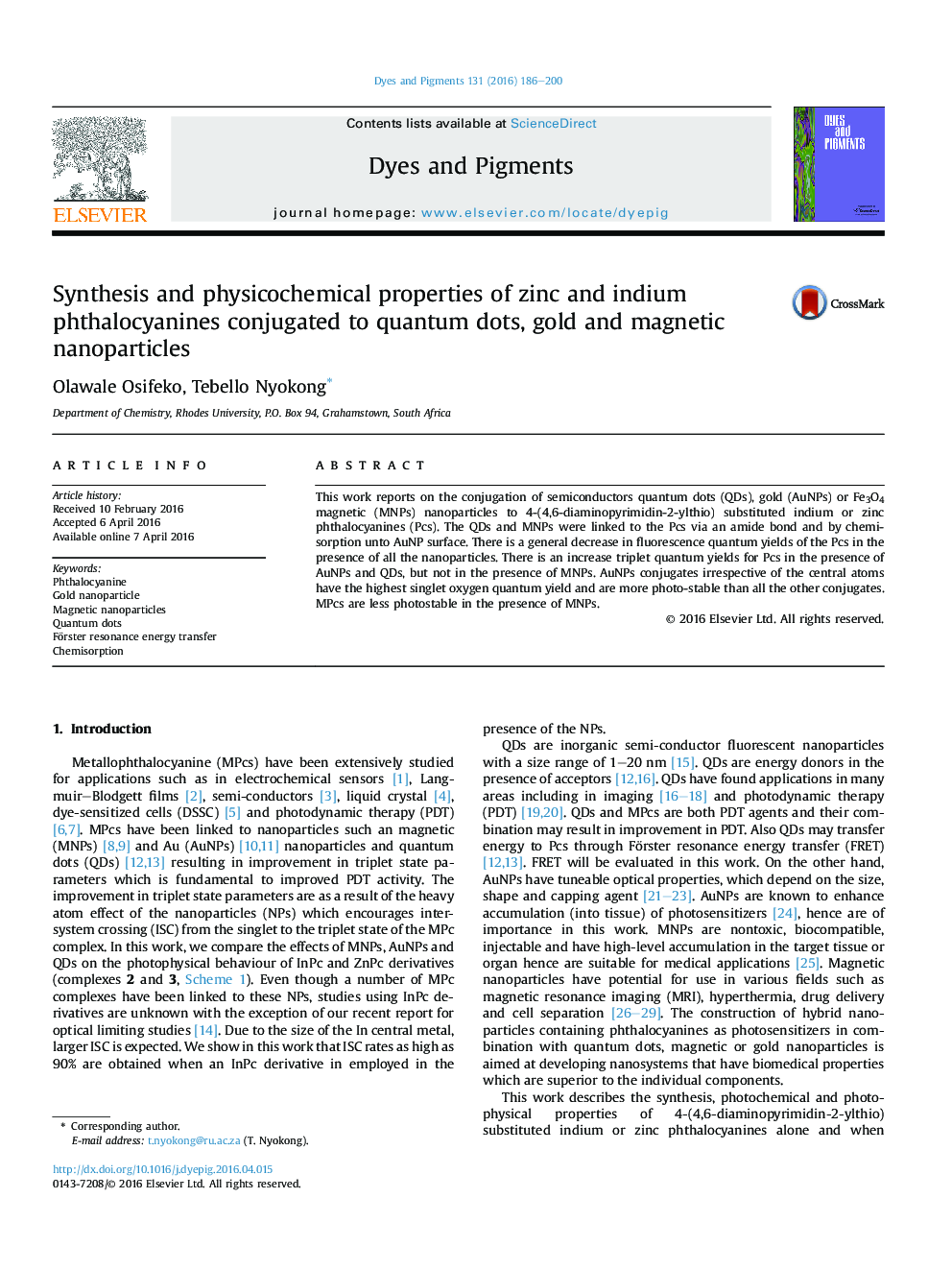| Article ID | Journal | Published Year | Pages | File Type |
|---|---|---|---|---|
| 175290 | Dyes and Pigments | 2016 | 15 Pages |
•4-(4,6-Diaminopyrimidin-2-ylthio) substituted indium or zinc phthalocyanines are synthesized.•The complexes are linked to gold and magnetic nanoparticles as well as to quantum dots.•Gold nanoparticle conjugates irrespective of the central atoms have the highest singlet oxygen quantum yields.
This work reports on the conjugation of semiconductors quantum dots (QDs), gold (AuNPs) or Fe3O4 magnetic (MNPs) nanoparticles to 4-(4,6-diaminopyrimidin-2-ylthio) substituted indium or zinc phthalocyanines (Pcs). The QDs and MNPs were linked to the Pcs via an amide bond and by chemisorption unto AuNP surface. There is a general decrease in fluorescence quantum yields of the Pcs in the presence of all the nanoparticles. There is an increase triplet quantum yields for Pcs in the presence of AuNPs and QDs, but not in the presence of MNPs. AuNPs conjugates irrespective of the central atoms have the highest singlet oxygen quantum yield and are more photo-stable than all the other conjugates. MPcs are less photostable in the presence of MNPs.
Graphical abstractHybrid nanoparticles containing phthalocyanines as photosensitizers in combination with quantum dots, magnetic or gold nanoparticles show improved singlet oxygen generating behaviour compared to phthalocyanines alone.Figure optionsDownload full-size imageDownload as PowerPoint slide
